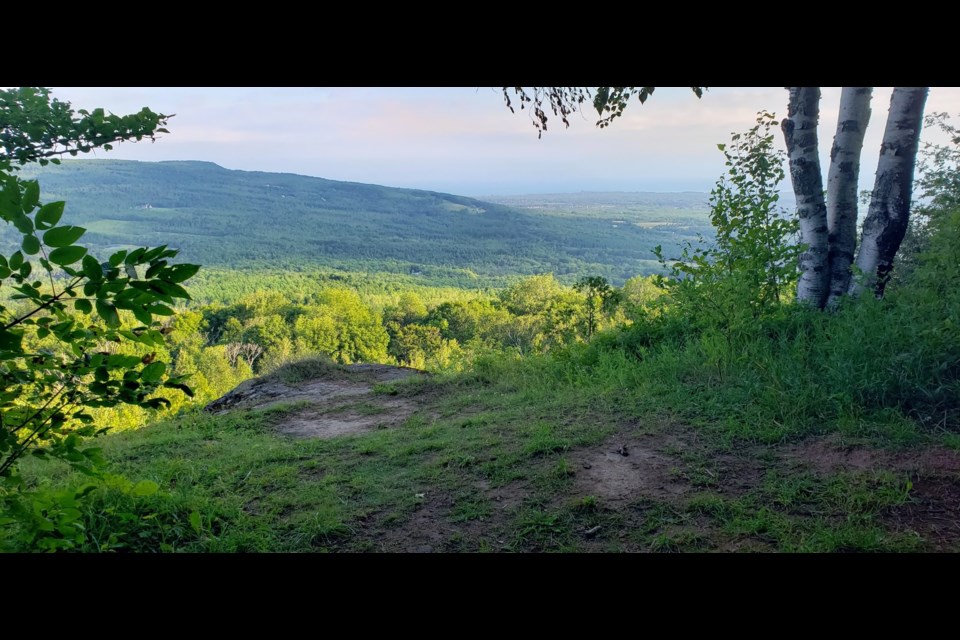About the author: Annette Sandberg grew up on the Blue Mountains section of the Niagara Escarpment, just three km west of Scenic Caves and she now resides in Collingwood. She is a local historian, researcher, and writer for the Gaslight Tour and the Grey Roots Museum, and guides people on interactive hikes through the land she writes about.
*************************
Canada’s first Christmas carol was first written in 1642 by French Jesuit Missionary, St. Jean de Brebeuf. He originally wrote it in Wyandot, which was the native language of the Wendat/Huron people and named it Jesous Ahatonhiam or Jesus, he is born.
The story first begins in 1626 when Brebeuf, then age 32, answers Samuel Champlain's call for Jesuit Priests to go to Huronia (what is now Simcoe County) in New France to convert the Natives to Christianity.
After a long and exhausting journey in canoe over turbulent waters and through wild and untamed land, he arrived in Huronia to the Huron Village of Toanche, located near what today is Tiny Township just off the shores of Georgian Bay.
He settled in among the Attignaouantan, or Bear Clan of the Hurons and for the next three years this was to be Brebeuf's headquarters. While there, he studied their language, customs and beliefs and the Hurons named him “Echon," which translates "healing tree."
In 1629, he was ordered back to France during the surrender of Quebec to the English, but resumed the Huronia missions in 1634 when it was once again returned to the French.
The Jesuits now desired to extend their missions to the surrounding tribes, including to the "Tionontate," the Huron name for the Petun, who lived in Tobacco Nation to the west at the Blue Mountains.
Within two months, Brebeuf personally visited the two Petun Deer clan villages at what is now Craigleith, then south to the Pretty River Valley and Duntroon where the Wolf clan Villages were.
In total, there were nine Petun Villages along the bottom of the Escarpment ridge that hosted twelve missions of the Jesuits.
During the winter in 1641, Brebeuf took a fall on ice and fractured his shoulder. After a year-long and arduous healing process, he was sent back to Quebec for further medical attention.
It is then that he wrote the Huron Christmas Carol in Wyandot to explain the significance of Christmas to the Huron people.
The three wise men anointing the baby Jesus, who is now wrapped in rabbit skin rather than swaddling, are the Wendat Elders. Instead of being put in a manger, Baby Jesus is placed in a bark lodge with Wyandot hunters instead of Shepherds. The gifts of gold, frankincense and myrrh were replaced by furs.
Brebeauf returned to Huronia in 1644 with the Huron Christmas Carol, and was welcomed by some, but not all.
Many of the Huronia Natives had begun to view the Priests as the devil in black robes who brought disease and death, stealing their cultures and beliefs and dividing their people for the sake of the Christian God.
On March 16th, 1649, an Iroquois raid on the now weakened Huron Village in Ignaus near Midland, ON, Brebeuf was tortured and killed.
Still, the Christmas Carol continued to be sung for over a hundred years and then was translated into English and French. Brebeuf’s final gift to the Wyandotte people, the Huron Christmas Carol, is still sung today and in their memory and honour.
Areas of Interest:
- Hiking - The Petun Conservation Area, The Blue Mountains, ON
- Historical Fortress Site of the Jesuit Missionaries - St. Marie Among the Huron, Midland, ON,
- The Martyrs Shrine, Midland, ON - The Shrine honors the eight Missionaries and houses the bones of St. Jean de Brebeuf, St. Gabriel Lalemant and St. Charles Garnier.
If you'd like to hear the carol written by Brebeuf and performed in Wyandot, French and English, you can do so by watching the video below:



